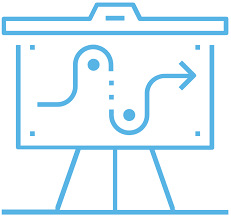
How To Market Your SaaS Product
 Simon Sewart
Simon Sewart
SaaS is a hard game.
A strategy is essential.
The sales funnel must be perfected by constant analysis and metrics.
Below is some essential, hard-nosed, practical advice.
Getting traffic.
An essential topic of course, and not an easy one, especially in a competitive and crowded space. But there are ways!
We won’t mention SEO here. It’s not something we’ve concentrated on too much so far. We have however, been quite successful with software directories.
Software Comparison Sites
For us, Capterra has been a major source of leads. We got named in the top 10 must user friendly help desk software solutions. There are other directories too of course, such as financesonline. For us, Capterra has accounted for 32% of our leads and 21% of our customers!

Again, monitoring rates is essential. We no longer use Google AdWords and focus all Pay Per Click on Capterra currently. But, as we regular assess the figures, this can and most probably will change.
Media Exposure
Help a reporter (Haro) is a great resource. You will receive a daily set of emails that contain requests from reporters for help with an article they are writing. This can lead to great exposure for you and your product, as well as high quality backlinks to your site.
Content
Of course content is a major way to drive traffic to you. White papers and great blog posts on subjects people need to know about are great sources of traffic.
On-boarding

On-boarding is the whole first half (retaining customers is the 2nd half, getting the leads is the warm-up).
Once a visitor reaches your site, how do you turn them into a lead i.e. a demo booked or free trial started?
Video Testimonials
One good way we have found is using short (60-80 second) case study videos from your best customers. This can be an important factor in converting a visitor into a free trial or demo lead. There is nothing like hearing about how great a product is from someone who is not involved with the product. It gives leads confidence to try or buy.
For us,
short 80 second video’s on our landing page boosted our leads by 23%
in comparison to having those same videos on a customers page alone.
The key to the videos is that they do not contain anyone from EvantoDesk in them. They feature the customers company and highlight what the customer loves about EvantoDesk and what problems EvantoDesk solved for them.
The sign up flow
The sign up for a demo and/or free trial process must be water-tight. Your website must be designed with the purpose of getting the visitor to sign up for a trial or demo. So, the flow must be right, with the call to action prominent. Try different layouts and compare sign-ups. Be meticulous.
The fields involved in signing up must be minimal. There must be as few fields as possible. So, perhaps just an email address and no other contact info. Certainly no credit card must be asked for.
The free trial experience
Once they’ve signed up for a trial, the hard work starts.
On-boarding emails must be timely and based on the customers engagement i.e. sending the same email to a customer who has used the product extensively to one who hasn’t signed in for a few days is a no-no.

If you note when customers are dropping out you can focus on that time-frame. For example, if they are dropping out in the first few minutes, you need to focus on that opening experience. The initial few minutes of their free trial should focus the customer on the most useful and best aspects of your product and the flow and intuitive layout must be apparent.
Within the first few minutes of their trial they must realise some or all of the value.
And, if the customer then doesn’t start a paid subscription during their free trial, you then need to send emails on that basis – i.e. offer to extend their free period. If that is declined, an email asking them why is also useful. We get about a 9% response from that and it’s all useful data with regards to working out how the software should be developed.
Look After Existing customers
From a monetary point of view, looking after your existing customers is vital because retaining existing customers costs effectively nothing compared to obtaining new ones.
Monitor metrics on your existing customers.
For example, we ensure that we monitor stats on the amount of activity on an account i.e. how many actions were executed each day. If and when this drops off, we can ensure that auto-emails are sent off to the customer to find out why and then we can engage and proactively resolve any issues the customer has.
Communicate with your customers.
Don’t flood them with emails of course! However, don’t be reserved either.
Don’t be shy with your existing customers, engage them appropriately.
A good relationship is built on good communication. So, letting them know about software updates once a month is a good way to let them know that not only do you still exist (and are approachable human beings), but also that you are investing time and effort into improving and developing the product.
If a customer leaves, find out why.
This is something we’ve always done and it was the reason perhaps that we still exist as a business. A while ago, we had a number of early adopters closing their accounts. To close an account it is mandatory to give us a reason. One reason cropped up a few times:
The UI was messy.
Ouch, that hurt. Our whole product was conceived to fill the gap in the market for small business, simple help desk software. It left us with a lot of soul searching and planning on how we could re-develop. We contacted all of the customers that had left (and those that remained) and got feedback on how we could re-develop the UI. The basis for our redevelopment was formed 100% by our customers, the best way.
Summary
The key take-away here is utilising software comparison websites and gaining media exposure can help drive traffic to your website, along with the usual suspects, SEO and great, valuable content.
Then the ball’s in your court. Your attractor website and on-boarding process must be finely tuned to maximise leads and then maximise paid-subscription customers.
 About the author: Simon Sewart is the CEO of his 2nd startup EvantoDesk.com (simple help desk software for small and medium sized businesses).
About the author: Simon Sewart is the CEO of his 2nd startup EvantoDesk.com (simple help desk software for small and medium sized businesses).



